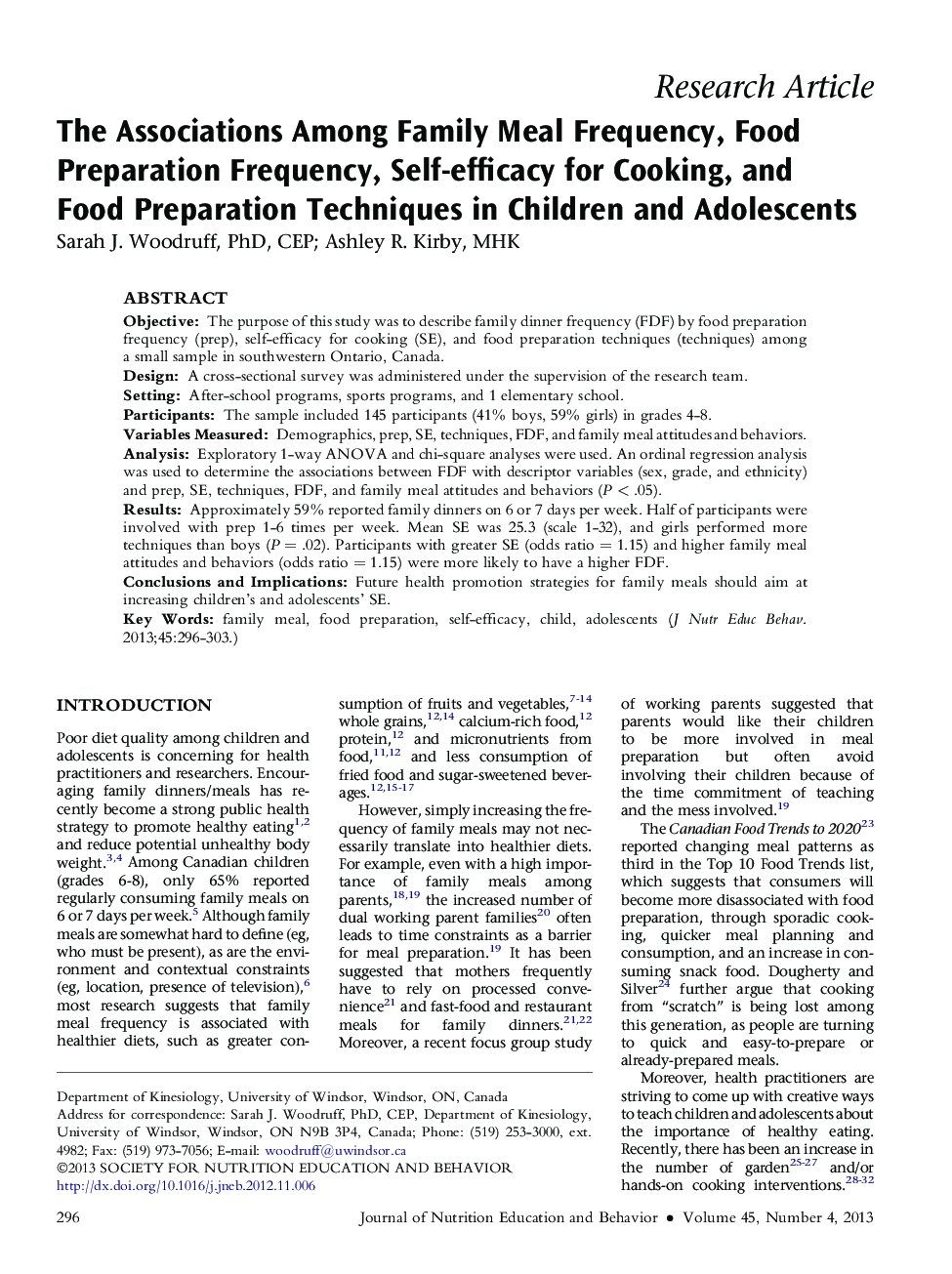| Article ID | Journal | Published Year | Pages | File Type |
|---|---|---|---|---|
| 361393 | Journal of Nutrition Education and Behavior | 2013 | 8 Pages |
ObjectiveThe purpose of this study was to describe family dinner frequency (FDF) by food preparation frequency (prep), self-efficacy for cooking (SE), and food preparation techniques (techniques) among a small sample in southwestern Ontario, Canada.DesignA cross-sectional survey was administered under the supervision of the research team.SettingAfter-school programs, sports programs, and 1 elementary school.ParticipantsThe sample included 145 participants (41% boys, 59% girls) in grades 4-8.Variables MeasuredDemographics, prep, SE, techniques, FDF, and family meal attitudes and behaviors.AnalysisExploratory 1-way ANOVA and chi-square analyses were used. An ordinal regression analysis was used to determine the associations between FDF with descriptor variables (sex, grade, and ethnicity) and prep, SE, techniques, FDF, and family meal attitudes and behaviors (P < .05).ResultsApproximately 59% reported family dinners on 6 or 7 days per week. Half of participants were involved with prep 1-6 times per week. Mean SE was 25.3 (scale 1-32), and girls performed more techniques than boys (P = .02). Participants with greater SE (odds ratio = 1.15) and higher family meal attitudes and behaviors (odds ratio = 1.15) were more likely to have a higher FDF.Conclusions and ImplicationsFuture health promotion strategies for family meals should aim at increasing children's and adolescents' SE.
